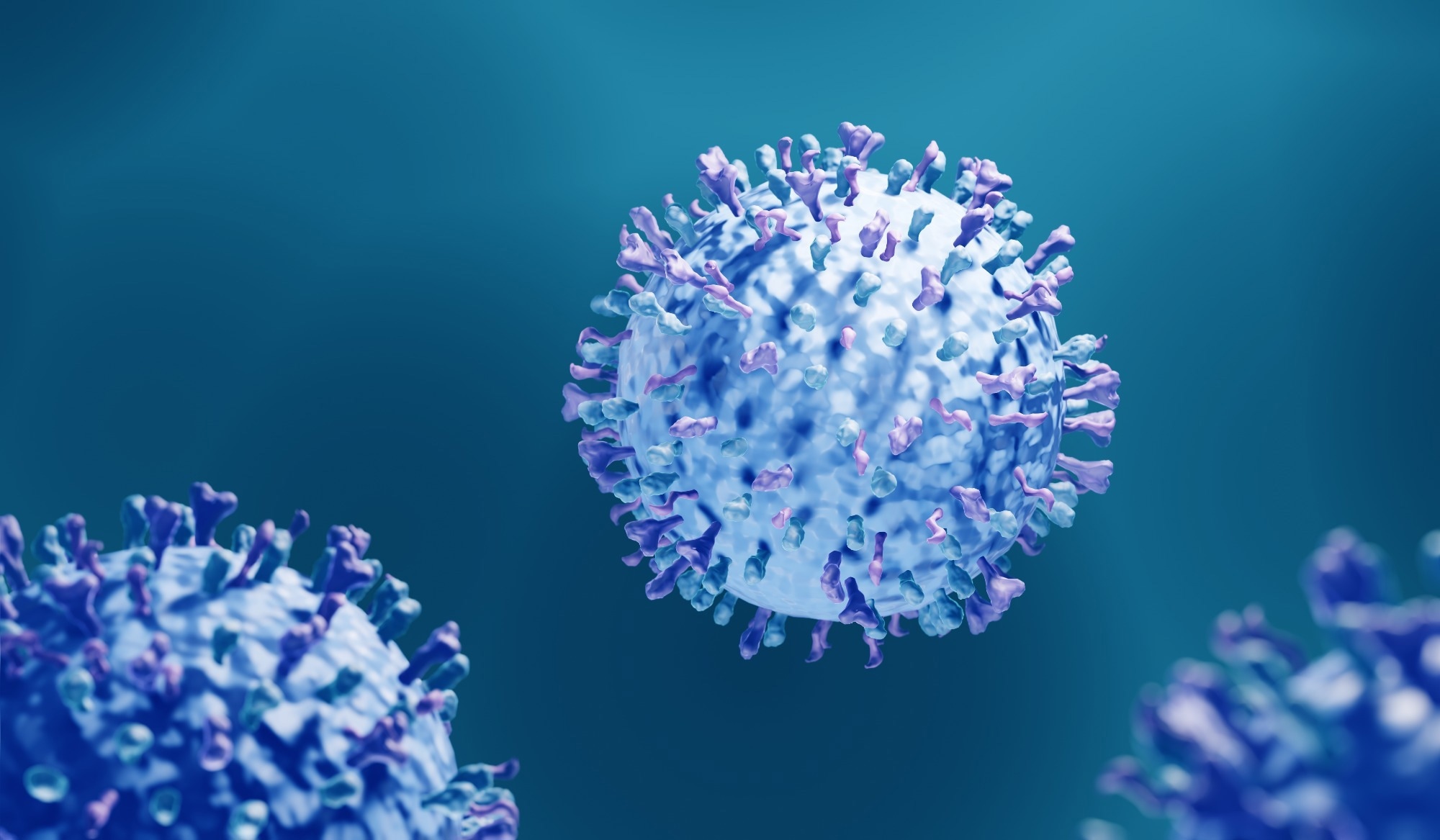A recent review published in Cytokine & Growth Factor Reviews discussed the structure and life cycle of respiratory syncytial virus (RSV), the current research on the treatment and prevention of RSV infections, and the advancements in RSV messenger ribonucleic acid (mRNA) vaccine technology after the surge in vaccine research during the coronavirus disease 2019 (COVID-19) pandemic.

Study: Development of mRNA vaccines against respiratory syncytial virus (RSV). Image Credit: ART-ur/Shutterstock
Respiratory syncytial virus
Respiratory syncytial virus infection is the most common pediatric acute lower respiratory tract infection and one of the major contributors to morbidity and mortality among children below the age of five. It is a single-stranded negative-sense ribonucleic acid (RNA) virus. RSV infections cause increased inflammation and mucus production and restriction of airways in children, especially during the first six months of life.
Belonging to the Pneumoviridae family, RSV is an enveloped RNA virus whose genome comprises ten genes encoding 11 proteins, including non-structural proteins, glycoproteins, and fusion proteins. The RSV fusion protein promotes cell attachment and infection by interacting with various molecules, such as the epidermal growth factor receptor. The structural sequence of the fusion protein is highly conserved and is targeted by various candidate RSV vaccines.
Major findings
The study reported that histopathological investigations have identified viral replication and immune responses during RSV infections as the primary causes of damaged airways. Increased neutrophil and eosinophil infiltration of the airways during RSV infections cause hypersecretion of mucus, obstruction of airways, and asthma exacerbation. Upregulated T helper cell type 2 responses during RSV infections also result in the secretion of various interleukins involved in chronic asthma and wheezing.
Current treatment options comprise bronchodilators, corticosteroids, epinephrine, and hypertonic saline sprays to alleviate symptoms. The review discussed a detailed history of the development of various types of RSV vaccines and the results of clinical trials investigating the dosage, safety, and immunogenicity of these vaccines. Although live-attenuated and subunit vaccines elicited effective immune responses, they also caused adverse reactions. Two subunit vaccines (RSVpreF3 and RSVpreF) and two vector-based vaccines (MVA-BNRSV and Ad26. RSV.preF) are currently undergoing phase III trials.
The authors also discussed monoclonal antibody-based therapies such as palivizumab, which targets the RSV fusion protein, and can be used as a preventative intervention during RSV infections. Nirsevimab and clesrovimab are two monoclonal antibody therapies whose neutralizing efficacy against RSV is being tested in phase III clinical trials.
According to the authors, the success of mRNA vaccines against severe acute respiratory syndrome coronavirus 2 (SARS-CoV-2) provided the impetus to developing mRNA vaccines for RSV and other infectious diseases, with many RSV mRNA vaccines already undergoing clinical trials. The Moderna mRNA RSV vaccine mRNA-1345 has already been approved by the United States (US) Food and Drug Administration (FDA) for single-dose administration to adults over 60. Phase I clinical trials for the mRNA-1777 vaccine reported no serious adverse reactions and a detectable increase in humoral immune responses. Moderna is also evaluating sing-dose mRNA vaccines encoding the RSV pre-fusion protein for children.
Challenges
The review discussed some of the challenges in developing RSV mRNA vaccines. While mRNA vaccines have circumvented the risk of enhanced respiratory disease, which had plagued early vaccine development efforts, the phase I clinical trials in humans have reported lower T cell responses than trials in animal models. Furthermore, the immune responses in humans consist largely of CD4+ T cells, as compared to the CD4+ and CD8+ T cell responses in animal models. The trials also reported a significant increase in interleukin-mediated pro-inflammatory responses.
The stringent cold chain requirements for the storage and transportation of mRNA vaccines also pose a serious challenge to the large-scale production of mRNA vaccines in economically underdeveloped countries.
Conclusions
To summarize, this comprehensive review examined the mechanisms of RSV pathogenesis and the role of viral replication and immune responses in causing airway damage during RSV infections. The authors also provided a thorough account of the history of RSV vaccine development. They discussed the safety and efficacy-related challenges during the clinical trials of various live-attenuates, subunit, and vector-based vaccines.
The findings also reported the success of phase I and II clinical trials for some subunit and vector-based vaccines and monoclonal antibodies used as preventative interventions against RSV. One of the most promising vaccine candidates is the Moderna mRNA vaccine mRNA-1345, which showed highly positive safety and efficacy results in phase II trials, and has been approved by the US FDA for administration to adults above 60 years of age.
Journal reference:
- Qiu, X., Xu, S., Lu, Y., Luo, Z., Yan, Y., Wang, C., & Ji, J. (2022). Development of mRNA vaccines against respiratory syncytial virus (RSV). Cytokine & Growth Factor Reviews. https://doi.org/10.1016/j.cytogfr.2022.10.001 https://www.sciencedirect.com/science/article/abs/pii/S1359610122000764?via%3Dihub
.

Commentaires
Enregistrer un commentaire